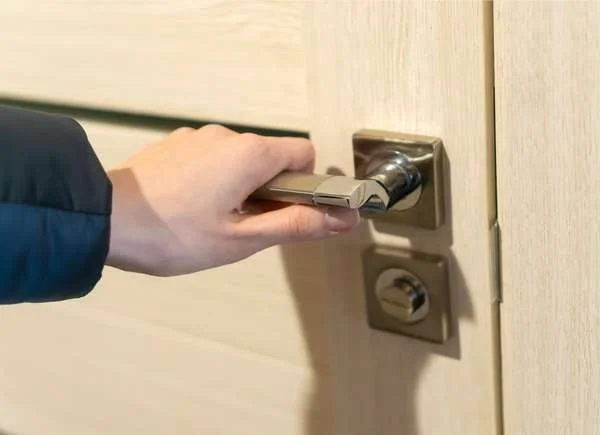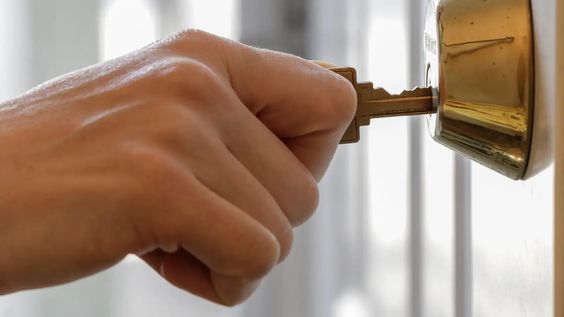Privacy door knobs are the door knobs that have a twist or a button type lock which works only from one side. They are usually installed in homes, bathrooms, living rooms, etc. Some of the privacy door knobs have a pinhole on the outside, and that hole has a key open the door from the other side. In simple words, we can say that privacy door knobs can be opened from one side without using a key, whereas they can not be opened from the other side.
These locks have a latch mechanism that prevents the door from being opened from the outside without using a key.
If you have lost your keys and your home has a privacy door knob, and you want to enter inside your home without damaging the lock mechanism, or just want to know about how to unlock a privacy door knob, then you have come to the right place to know your answers.
Here are the methods that you can use to open the door without harming or damaging your lock.
1. Flathead screwdriver
You can use a screwdriver of appropriate size. But keep in mind to use a flat head, hard and strong screwdriver. All you will have to do is insert the screwdriver into the hole of the doorknob and slightly rotate the screwdriver while constantly inserting it inside the hole. And you have to try to locate the lock.
You can use anything that is flat, hard, strong, and long enough to get inserted into the hole. These things can be bobby pins, paper clips, any metal wire, etc.. you have to bend their tip, make an angle of 90 degrees, and then rotate it while inserting until you hear the clicking sound.
Once the sound is heard, congratulations, your privacy door is unlocked successfully.
2. Emergency keys
You can use emergency keys to open the locked privacy doors; usually, they come with the locks. It is one of the easiest ways, as it saves time and prevents the door and the lock from damaging.
3. Teaspoon
You may also use a small flathead teaspoon. But the spoon must be hard and strong enough to perform this task. Not all types of spoons will work, especially the expensive teaspoons that have handles.
It is one of the stronger methods than paper clips and bobby pins. Try to use a spoon that is cheaper, and you will not mind-bending it.

4. Paperclip, bobby pin, or metal wire
You may use anything from the above. But you may need to bend them in the shape of the English alphabet L to make them easily accessible to enter inside the hole. You can do this by using a pair of pliers. You will have to constantly insert the wire inside the hole by constantly rotating it and locating the lock. When the door is unlocked, you will hear a clicking sound that will indicate that the door is successfully unlocked.
Frequently asked questions
What is an emergency key?
An emergency key is a key that is used to open a privacy lock from outside of the door. You can get these emergency keys online or from your nearby hardware shops. Most of the brands give them along with the lock.
What are the different types of privacy locks?
Turn button or turnover lock – in this type of lock, you just have to turn the button in the clockwise direction. Out of all privacy locks, it is one of the most affordable ones.
Push pin or button lock – in this type of lock, a button is located at one side, usually inside on the door knob or lever’s rosette. You just have to turn the lever inside to unlock the door.
Lever or knob lock – it is a modern and unique type of privacy lock. It looks like it has a lever, but it doesn’t have a lock on the outside. You just have to pull the lever in a downward direction to unlock the door.
Conclusion
Privacy door knobs are the types of door knobs that are widely used these days in the home, especially in the bathroom areas of the house.
They have a knob that has twists or button types, which works only from one side. These locks have a latch mechanism that prevents the door from being opened from the outside without using a key.But in emergency situations, you can open the door by using emergency keys, teaspoons, or metal wires such as paper clips, bobby pins, etc.
I hope this article is helpful for you. If you still have any doubts, you can comment down your queries in the comment section we will try to sort them out.






